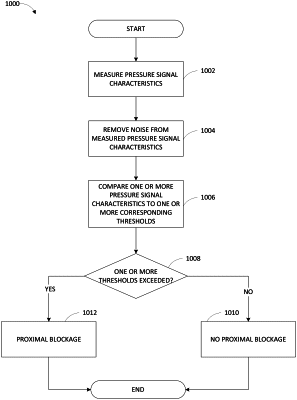| CPC A61M 1/96 (2021.05) [A61F 13/05 (2024.01); A61M 1/60 (2021.05); A61M 1/732 (2021.05); A61M 1/78 (2021.05); A61M 1/982 (2021.05); A61M 1/882 (2021.05); A61M 2205/15 (2013.01); A61M 2205/18 (2013.01); A61M 2205/3331 (2013.01); A61M 2205/3344 (2013.01); A61M 2205/3382 (2013.01); A61M 2205/75 (2013.01)] | 20 Claims |

|
1. A wound therapy apparatus comprising:
a negative pressure source configured to provide negative pressure, via a fluid flow path, to a wound covered by a wound dressing;
a canister configured to be positioned in the fluid flow path and to store exudate aspirated from the wound;
at least one pressure sensor configured to monitor a pressure in the fluid flow path; and
a controller configured to:
distinguish between a blockage in the fluid flow path and an amount of exudate in the canister reaching a threshold level of fluid, wherein the blockage in the fluid flow path and the amount of exudate in the canister reaching the threshold level of fluid cause a decrease in a level of activity of the negative pressure source;
detect the blockage in the fluid flow path responsive to the level of activity of the negative pressure source satisfying a threshold level of activity;
detect a leak in the fluid flow path responsive to a pressure difference across a flow restrictor positioned in the fluid flow path satisfying a leak threshold;
perform a first action responsive to detection of the blockage in the fluid flow path;
perform a second action responsive to detection that the amount of exudate in the canister has reached the threshold level of fluid; and
perform a third action responsive to detection of the leak in the fluid flow path.
|